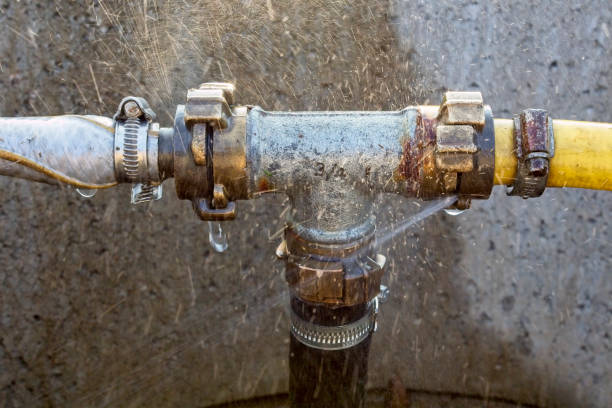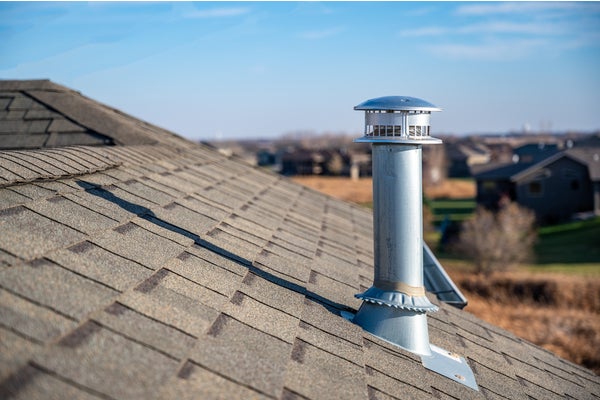[ad_1]
Sewer gas smell can be a health hazard and should not be taken lightly. The problem of sewer gas is very real, and it’s important that you know how to identify when the issue arises. If you are experiencing any sewer gas smells in your home, then you should look for ways to get rid of that smell as soon as possible.
There are many ways that you can remove the sewer gas smell from your house. This guide will walk you through various ways to identify and remove sewer gas smells and show you how to resolve the problem as quickly as possible.
Causes of Sewer Gas Leaks in Your Home
Dry or Clogged Drains
The most common cause of sewer gas smells in a house is a clogged drain. When a drain has clogged, the gasses from the septic system cannot move through your plumbing and instead build up in your home. If you have a dry shower drain, there is no water that will flush out the gasses from the septic system into your plumbing.

Drain traps help prevent gases from entering your home. However, they can clog or dry out due to bad weather or poor air ventilation, allowing gas to flow back into the house. You can tell if your main sewer drain line is clogged if you notice water backing up in your bathtub or other fixtures when you flush a toilet.
To fix this sewer gas smell, it will depend on the size and location of the drain clog. Once you know this, you should take the necessary steps to learn how to unclog the drain restore your sewer line. Don’t hesitate to call a professional plumber to assist you with your drainage problems if the problem appears complicated.
Dry or Loose Plumbing Pipes
Loose or dry pipes give off a sulfur-like odor, an indication that there’s a leak of some kind. If you spot holes, cracks, leaks, and loose joints on your water supply system or waste disposal system, then you should call a plumber to get it fixed before the gas enters your home.

Check your water traps when you have a dry or loose plumbing system. Called p traps or s traps, these winding pipes exist below every drain in your house. They’re designed to trap water in the curve, creating a seal to prevent gases and odors from seeping back into your home.
If you notice the smell coming from a particular sink, tub, or floor drain, turn on the water and let it run for a few minutes to fill up the tank and restore the water seal. If the problem persists, call a professional to check it out.
Your toilet also has a wax ring that creates an airtight seal between the bowl base and drain pipe. If the wax dries up or breaks down, the seal cracks, allowing sewer gases into your home. If you notice this, replace the wax ring, which you can find at any home improvement store.
Make sure you completely remove the old ring, otherwise you won’t get an airtight seal. Don’t hesitate to call a plumber if you’re not comfortable doing it yourself.
Roof Vent Pipes
When you have a roof vent pipe, it’s important to ensure that the elbow is pointing up. If it’s not angled in this way, rainwater may get in and mix with wastewater from your toilet or sink. This will contaminate your wastewater by causing an increased amount of solids.

If rainwater has already gotten into your sewer pipes, use a wet vac to suck up the water. Make sure your roof vent pipes are properly cleaned to prevent them from trapping the sewer gas odor.
Improper Ventilation
Plumbing requires airflow to effectively run water through pipes, otherwise, you’ll end up with a vacuum where nothing moves. To ensure proper airflow, every system needs a plumbing vent, also known as a plumbing stack, a vertical pipe that attaches to the drain line and extends through the roof. This plumbing vent brings fresh air into your plumbing, helping regulate pressure and removing gases and odors.
If your plumbing vent is clogged with debris, sewer gas can’t be removed and so filter into your home. A common sign of a blocked plumbing stack is a gurgling toilet. To fix this, try to safely reach your plumbing stack and then clear out the debris from the vent. If you’re not comfortable climbing your roof, call a professional to help you.
Clogged or Cracked Pipes
If your sewer line is cracked or clogged, it can create a powerful sewer gas smell. A plumber can run a camera through the plumbing system and identify clogs, cracks, leaks, or breaks. Rotten and cracked pipes are common in older homes that have not had their plumbing updated.

Pipe issues can also be caused by items that shouldn’t be flushed or poured down the drain. To fix it, you’ll need the help of an experienced plumber because a loose or cracked sewer drain pipe isn’t something you can fix on your own.
Solutions for Identifying the Sewer Smell
Once you find the source of sewer odor, the next step is to find a sewer cleanout for your home. You may be able to remove the smell of the gas on your own, depending on the gas exposure level in your home. For instance, if the clogged vent is the main suspect of sewer gas, you can try flushing your pipes.
You can flush your pipes naturally by removing the drain cover, then slowly pour in about 1-2 gallons of boiling water, followed by a cup of vinegar, and lastly, a half cup of baking soda and more boiling water. If the smell is coming from a weak toilet seal, you can use caulk or another waterproof sealer around the base.
If the smell only emits when you’re using hot water, such as while using the sink or shower, then you may have an overgrowth of bacteria in your water heater. You can kill this bacteria by increasing the water temperature for 24 hours and flush out your pipes. You can also have your water tested if any other bacteria or sulfides are present.
Is Sewer Gas Dangerous?
Sewer gas can include hydrogen sulfide, ammonia, and methane. The hydrogen sulfide is what gives sewer gas that awful rotten egg smell. It’s not common to become exposed to sewer gas smell at home. However, it’s more common to be exposed to higher concentrations of sewer gas in an industrial workplace.
Most residential sewer lines contain gases found in the air such as oxygen, nitrogen, and carbon dioxide. While too much exposure to high concentrations of sewer systems can cause headaches, dizziness, nausea or vomiting, memory loss, poisoning, and asphyxiation. There is even the risk of fire or explosion if consumed in large amounts.
FAQs on How to Identify and Remove a Sewer Gas Smell in Your House
Is there a detector for sewer gas?
Yes, sewer gas detectors can monitor the combustible gases present in the air. Plumbers also conduct a smoke test to determine the source of the leak.
How can you tell if you have a sewer gas leak?
The symptoms of sewer gas leak include loss of smell, mouth, throat and lung irritation, eye irritation, and pink eye.
Final Thought on How to Identify and Remove a Sewer Gas Smell in Your House
As you see, it’s important to find the source of the sewer smell in your house if you noticed it. The unpleasant odor can be a result of a serious issue that should not be ignored. To protect your family and have a healthy living, follow the steps above to locate and get rid of it as soon as possible.
The post How to Identify and Remove a Sewer Gas Smell in Your House appeared first on Kitchen Infinity.
[ad_2]
kitcheninfinity.com










